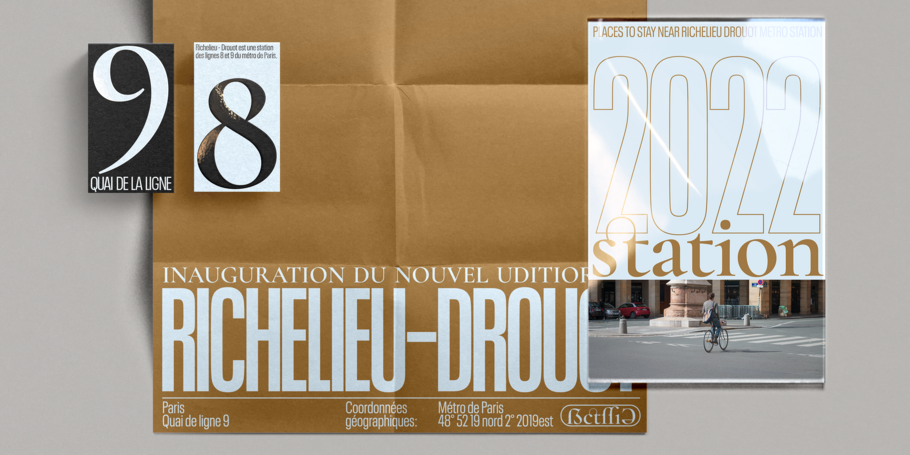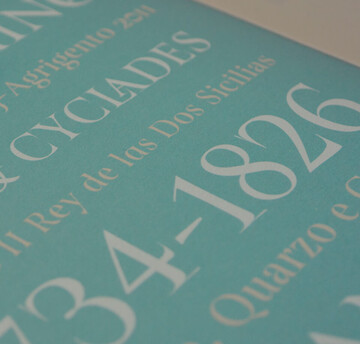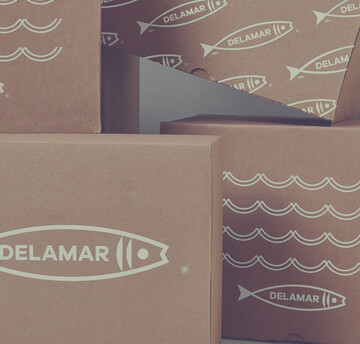What creative leaders need to consider in a brand refresh.

You’re at your desk reviewing your emails, and getting ready to kickstart a new design project tomorrow. You’ve read over the project brief, and you have a team call coming up to go over the project guidelines. It’s an exciting challenge, but you’re not sure where to begin.
You’re hung up on the fact that the brand design needs to resonate with customers, while also having longevity to meet customers where they might be tomorrow. You’ll need to create the project from the customer’s perspective – but how do you do that?
Here are the three types of support creative leaders need to consider for a rebrand or a merger and acquisition.
1. Brand direction support.
Before you can get started designing, you first need to make sure you’re headed in the right direction, and that means understanding your customer. After all, 84% of customers consider the brand experience equally as important as its products and services, and 66% of consumers expect companies to understand their needs.
To meet customer expectations, you’ll want to determine your 5W’s:
- Who is your audience? Who are the stakeholders?
The global landscape is constantly changing. If your organization has a global audience (or global ambitions), it’s important to make sure your design is adaptable for language support across different devices (such as phones in the U.S. versus phones in India). You’ll also want to consider what typeface your customer will best respond to, while balancing the needs of your stakeholders.
- What is the project goal?
All stakeholders need to be aligned with each other on the short-term goal of the project to ensure that the typeface and visual design meet the brand requirements. If you’re working on a brand design for a merger and acquisition (M&A), you’ll also want to determine the strengths of each brand for the combined final design.
- When does the project need to be done by?
This one’s a given, but the brand design needs to be completed in a timeline that makes sense with the current market. Determine what month the brand launch will best succeed to increase the odds for success. You’ll want to consider seasonal consumer habits and upcoming holidays that may impact customer spending.
- Where will the project live, and will this change over time?
Before you start the brand design, you’ll want to know if the project will live on desktop, mobile, or extend to print. Perhaps the typeface you select will need to perform on a future mobile app as well as on the brand’s website. Be sure to plan for today and tomorrow.
- Why are you creating the project?
You’ll want to understand the long-term project direction. How will this design project help the brand achieve their 10-year goals and beyond?
2. Discovery support to improve font selection.
Once you’ve tackled brand direction, it’s time for the research phase to find a beautiful font that’s right for your brand. When it comes to fonts for rebranding, you’ll want to choose a font that solves the brand problem, while also aligning with the needs of your customers and stakeholders. Type choice is especially important in brand design; fonts have the power to increase positive consumer response by 13% when it’s a good match. Additionally, the right font can have a 9% increase in trustworthiness and a 10% increase in memorability.
Here are three different strategies to start the font discovery process:
- Bring in a font platform.
Instead of spending weeks searching the web for the right font that meets your needs, you can invest in a single font portal, a one-stop platform with a range of trusted, licensed fonts. The benefits of using one font library are that all of your fonts are accessible from one place. Most font libraries also come with filtering options so you can limit your font search to typefaces that meet your needs, whether you’re looking for a font that’s ‘casual+clean’ or ‘retro+rounded’. Choosing fonts for a rebrand is an important step in the design process.
- Bring in a type designer.
If you’re looking for a customized/modified font that’s made specifically for your brand, consider bringing in a font expert. A type designer can work with you to design a custom font that meets your unique, individual needs, and sets up your brand’s entire visual identity (from logo to website), apart from competitors. Studies show that companies that excel at personalization generate 40% more revenue and grow faster.
- Perform a typography audit of the customer experience.
If you’re designing for a rebrand or a M&A, a great starting point is to review the customer experience. Begin by determining how customers find your brand, and map out how they navigate your website and digital products. These are both key factors in how you can align your rebrand to meet your customers where they are. For M&As, the acquired brand will have a different URL, typeface, and geography, so examine all of these factors to better understand what resonates with customers. Revisit your existing fonts to see which resonates best. You may decide to keep one brand’s typeface, or create a new typeface that embodies elements of both brands. A single font portal offers an easy way for brands to quickly revisit the fonts they use and add new languages to cover new geographies or font case uses for acquisition.
3. Testing support for your brand typeface.
Once you’ve chosen a beautiful font that works for your brand, you’ll want to run testing to verify that it’s the right fit. Because brands have a global audience, you’ll want to reach out to a diverse set of collaborators to ensure you’re getting the full picture.
Here are three types of testing to try:
- Perform an internal brand type assessment.
Plug your new brand typeface into templates your brand uses on a daily basis to check its function. Add your new font to email tools and survey tools, and send a test to your internal team to see how the font performs with different screen sizes and screen readers. Is the type legible on desktop and mobile? How about in email form? You’ll want to make sure the type you choose for the brand design is consistent from the website to any mobile apps as well.
- Conduct a brand type assessment with customers.
To ensure your typeface will work with your global, digital audience, reach out to a few of your trusted customers in different countries, and ask them to provide feedback. You can send customers an anonymous survey with your new font to get their honest feedback.
- Determine how typographic attribution should happen.
If you’re selecting a new font for a M&A, you’ll want to think about typographic attribution. The new brand rollout could happen all at once, or be a slow transition to ease customers into the change, such as an initial logo or footer change. Just think of when Continental Airlines merged into United Airlines in 2010 – the companies decided to merge typography, opting to use the Continental logo with a new typeface that was inspired by United Airlines’ original font. Meanwhile, when Telecom and Sprint merged (2018-2020), the final logo was the standalone T-Mobile logo.
Time to get designing.
Now that we’ve discussed brand direction, font discovery, and typeface testing, it’s time to kickstart the design process. Whether you’re starting from scratch for a brand design or reviewing existing typefaces for an upcoming M&A, it’s important to choose a font that’s right for you.
Remember, if you choose a beautiful font that’s not right for your audience, you’ll miss out on revenue and potential customers. Having a single font portal where all your typefaces are housed in one place can be especially helpful for revisiting existing fonts, finding new ones, and shortening the search process throughout the design process.














